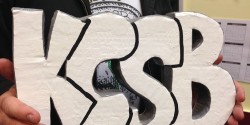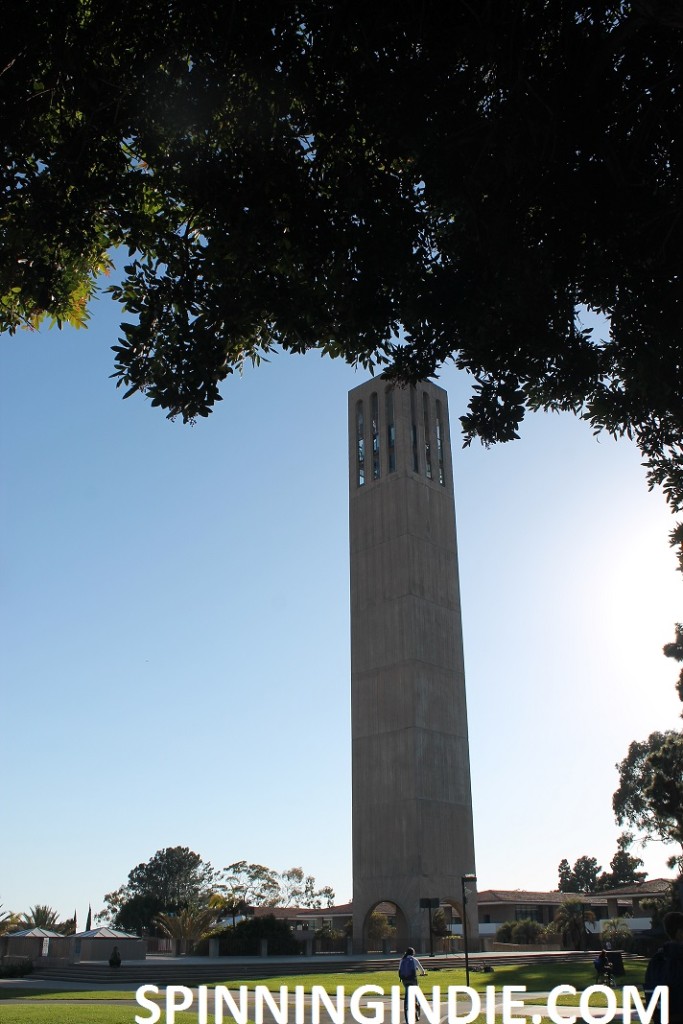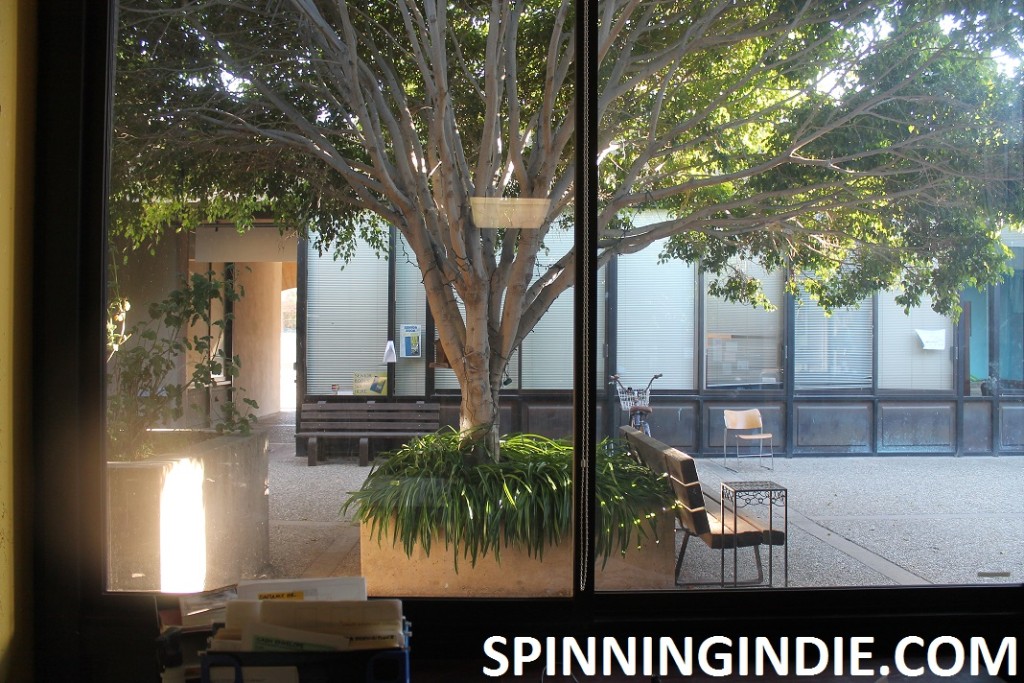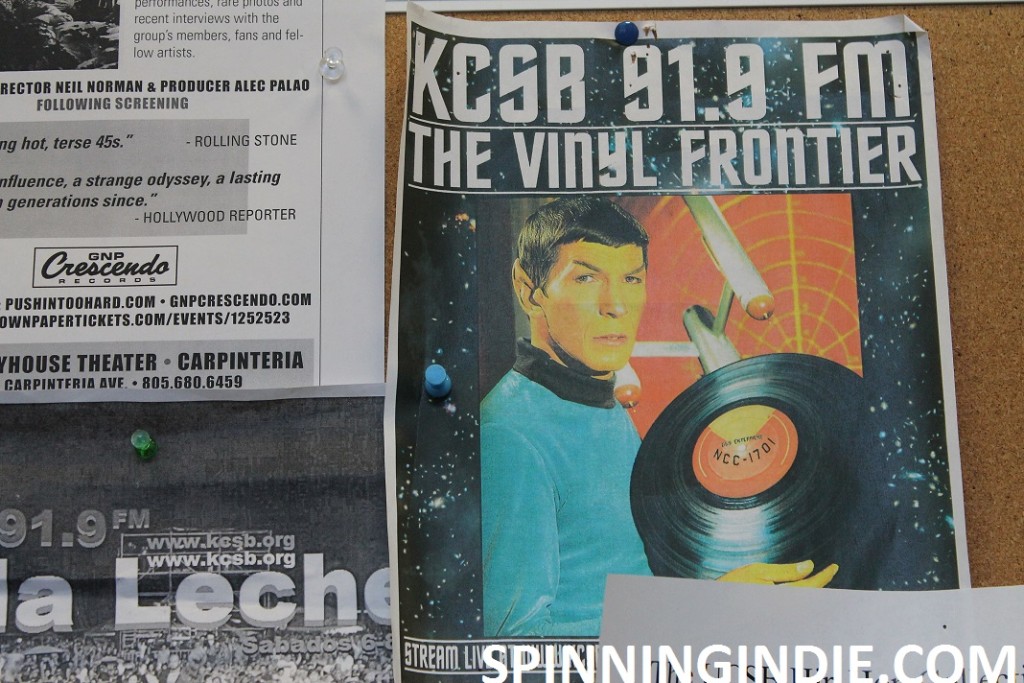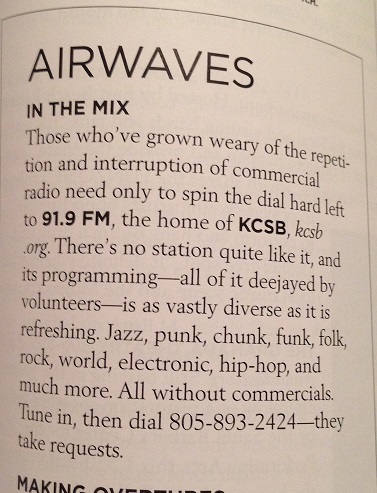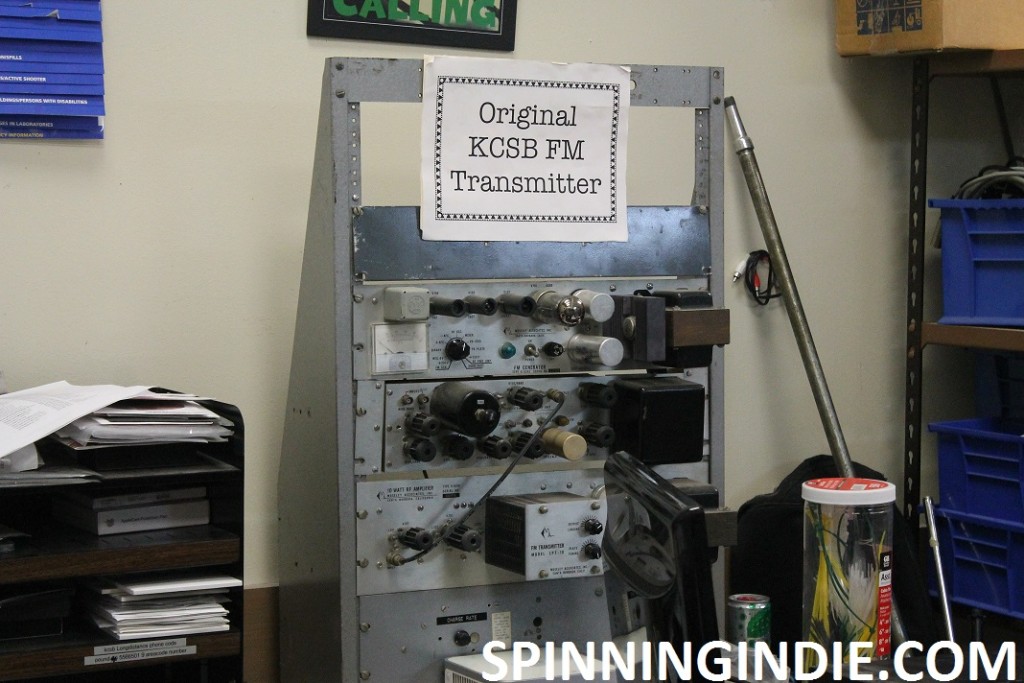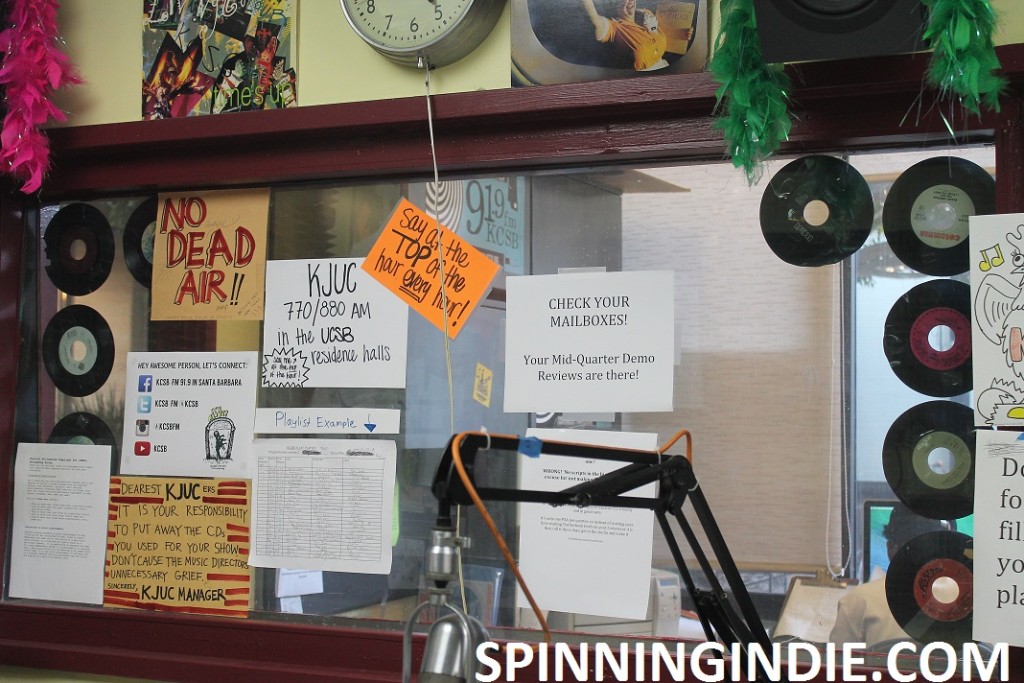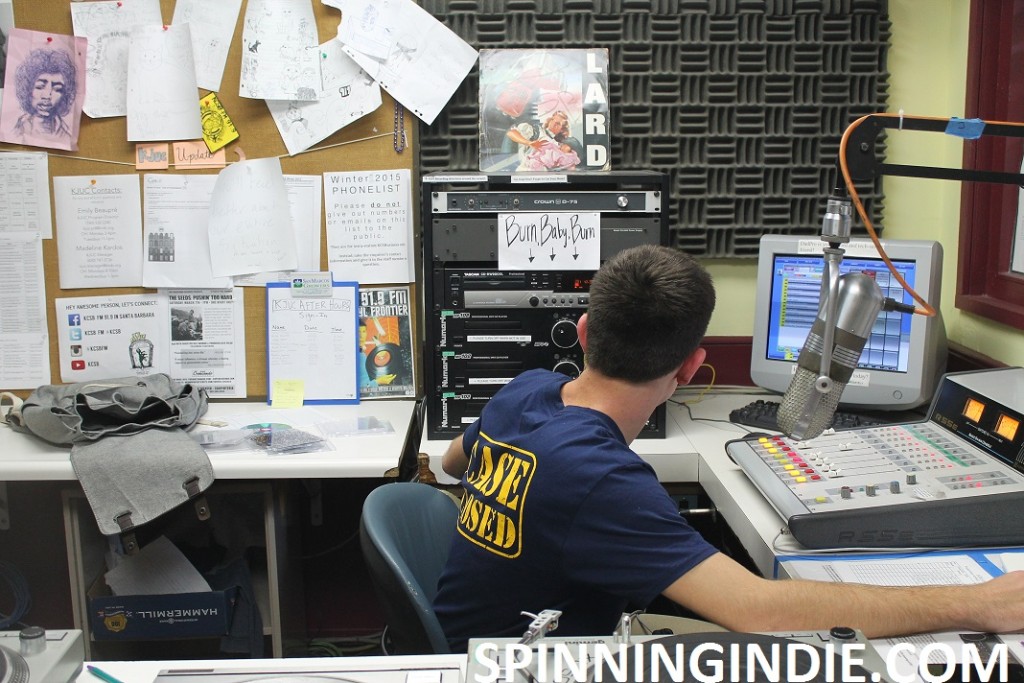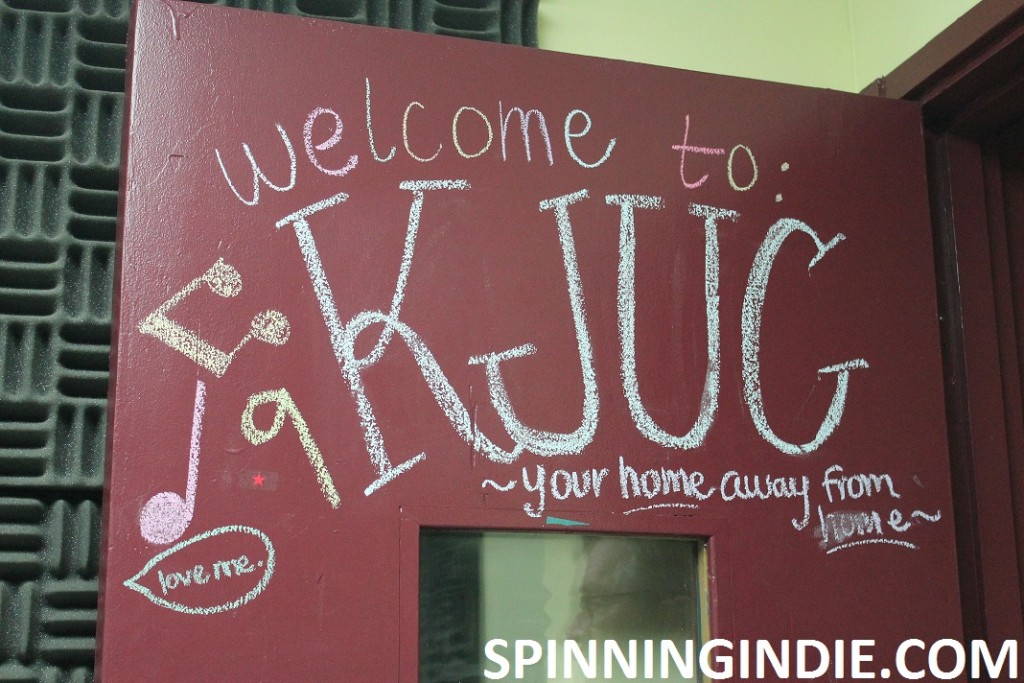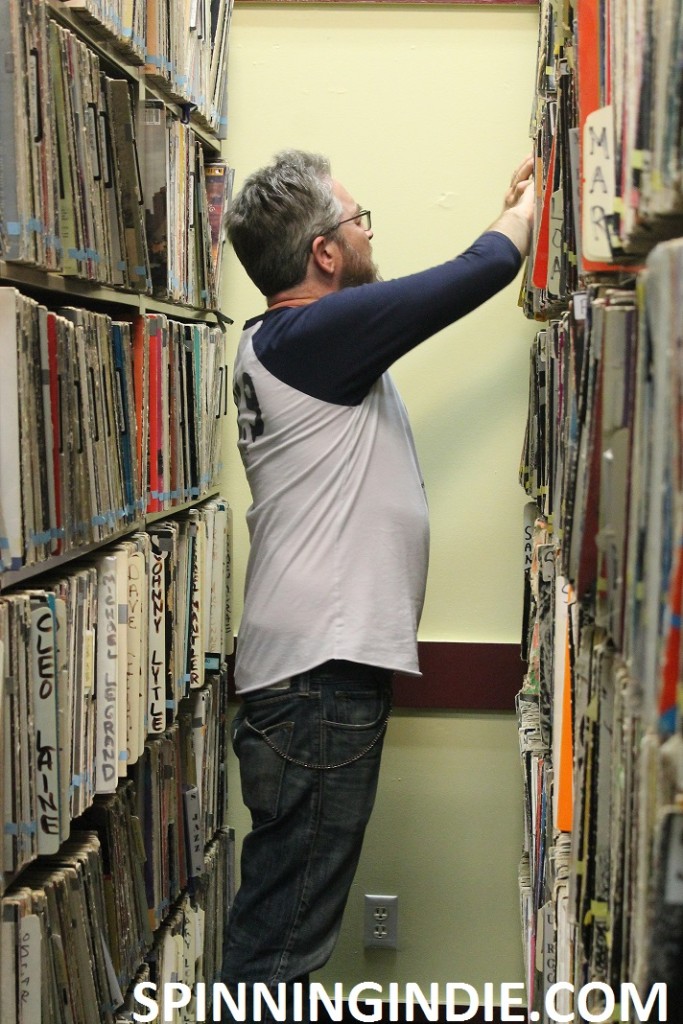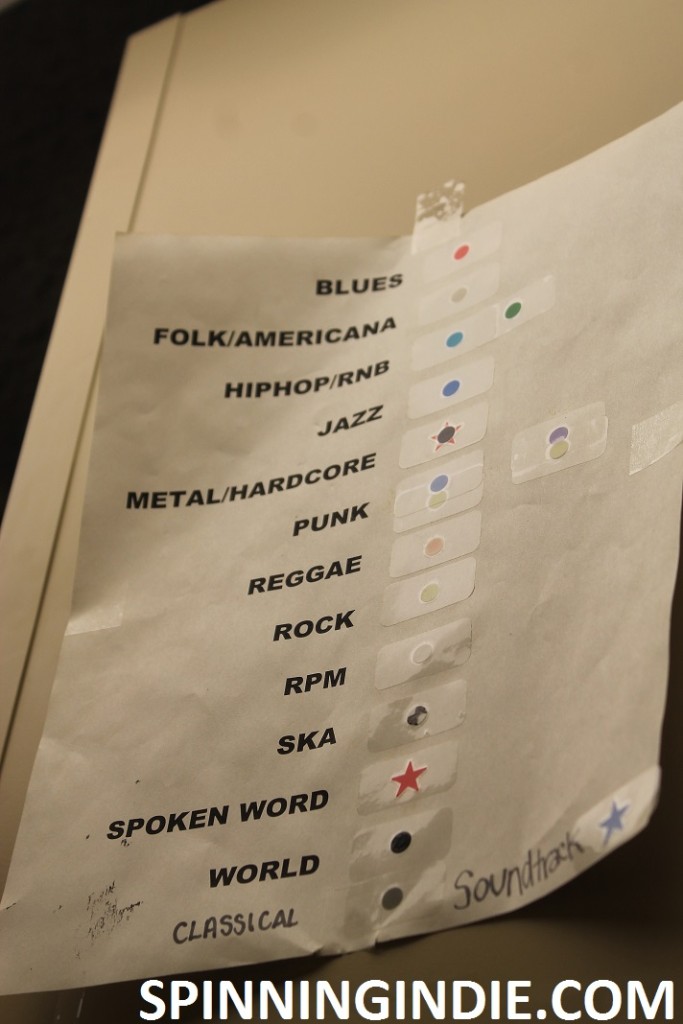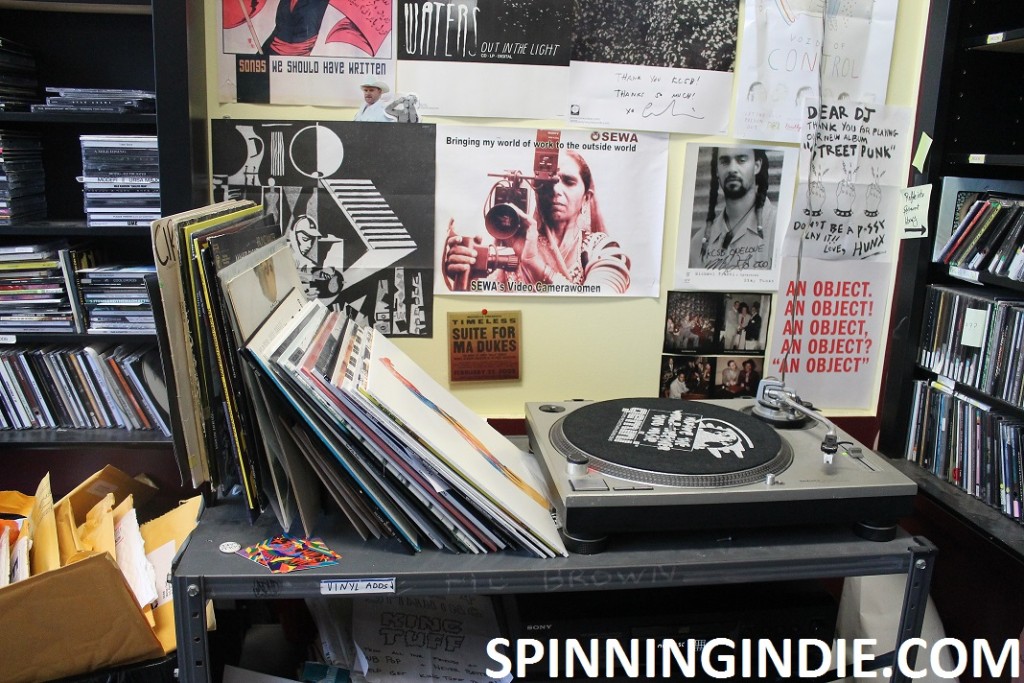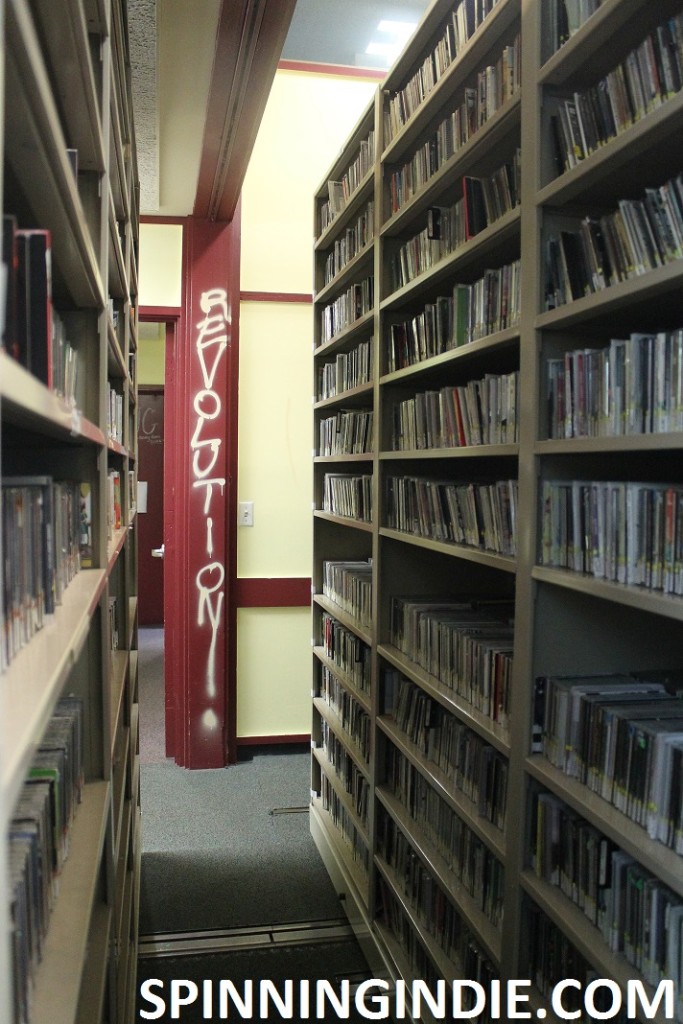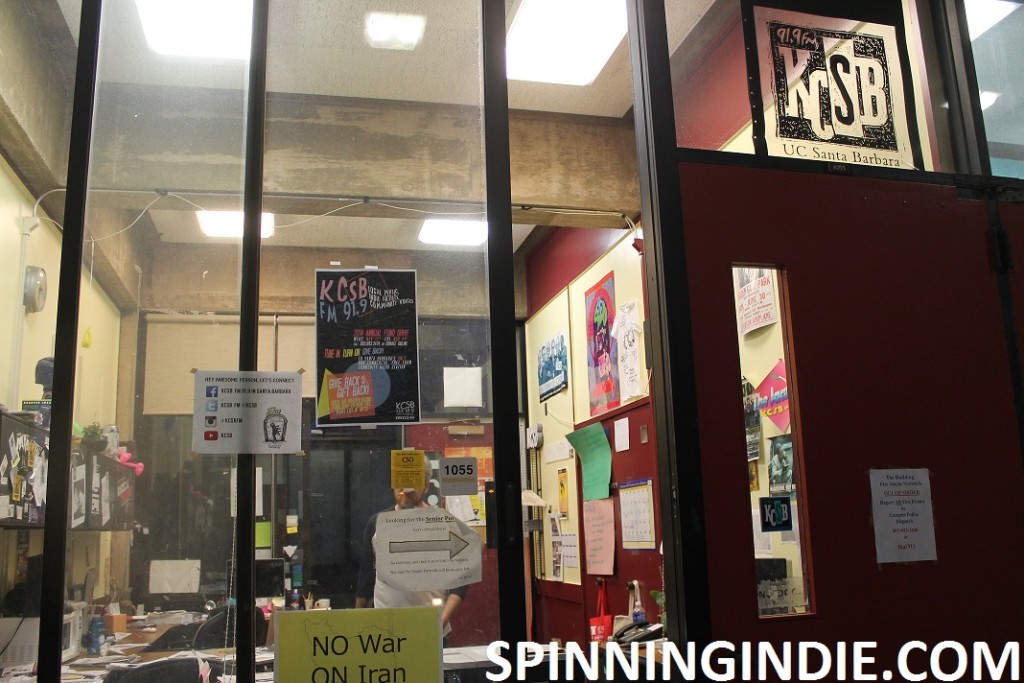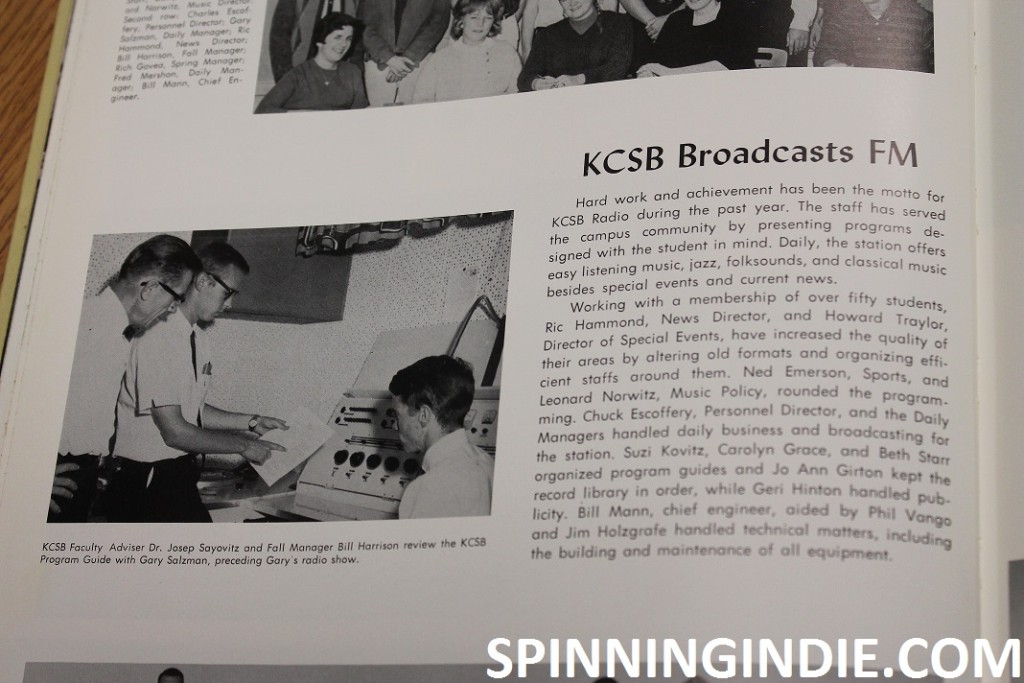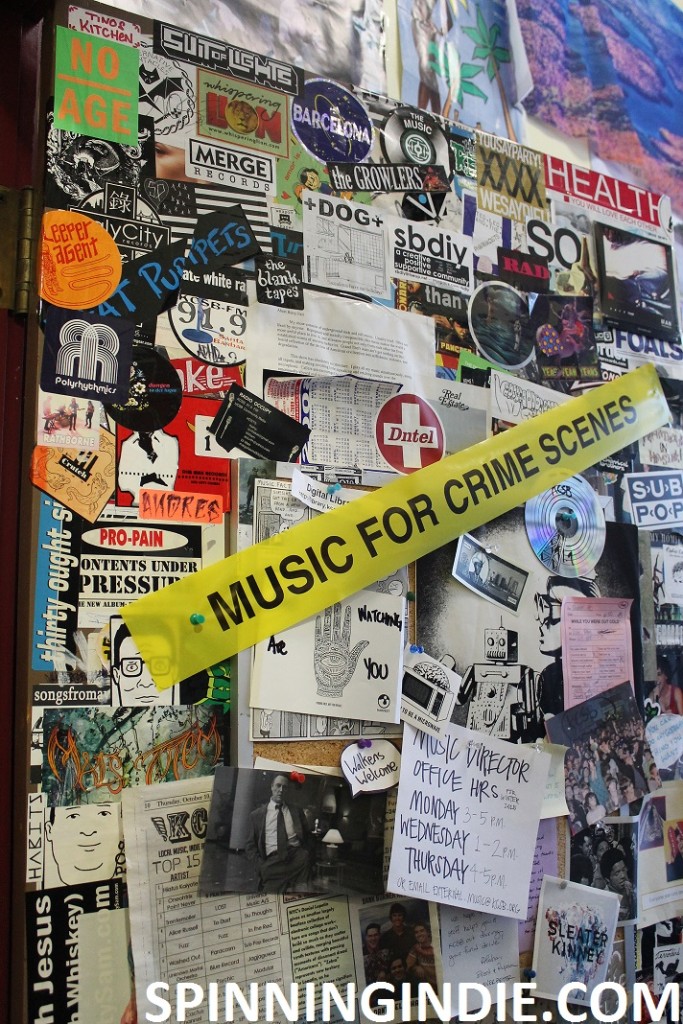On Friday, March 6th I popped by University of California, Santa Barbara’s college radio station KCSB 91.9 FM. I was in town for the weekend and it was the perfect chance to finally write about the station. Even though I’d visited before for a UCRN conference in 2011, I’d never gotten around to writing a field trip post.
My friend Ted Coe, who is KCSB’s Development Coordinator, offered to tour me around on a lovely, spring-like afternoon. Coincidentally, as I sat down to write this post, Coe’s show was airing on KCSB (he did a tribute to recently departed Leonard Nimoy on his Monday show). Coe has been at UCSB since 1989, but started at KCSB around 2000.
KCSB is located beneath the Storke Tower at UC Santa Barbara, inhabiting several buildings that surround an open plaza. The studios and some offices are located on one side of the plaza and several other managers have offices across from them, looking out onto the plaza. The architecture has a California vibe and as I chatted with Coe in his office, I was amazed by the large windows that slid open to let in the ocean breezes.
As I arrived in the late afternoon, Coe and KCSB’s Chief Engineer and Music Director were talking in the plaza. They excitedly shared the news that KCSB had just been named “best radio station” in the latest issue of Santa Barbara Magazine. They were pleasantly surprised by the mention and I was eager to take a look at the magazine when I spotted a copy that night in my hotel room.
KCSB first went on the air in 1962 (listen to an interview its founder here) and there are some reminders of its history throughout the station, including old photos, awards, and the original transmitter. A few years back KCSB celebrated its 50th anniversary with some special programming, including a controversial Sean Hannity broadcast that got the student radio host fired back in 1989!
Broadcasting at 620 watts, KCSB’s signal reaches all over the Santa Barbara area and as far away as Los Angeles to the south and San Luis Obispo to the north. Station volunteers are comprised of both students and community members, with every new station member passing through a rigorous training program.
New programmers start out by working in the KJUC studio, which used to be a campus-only carrier current radio station and formerly was streamed over Cox cable as well. Although KJUCers aren’t transmitting programming anymore, it still serves as a training ground, with new volunteers creating and recording sample shows in the KJUC studio. As I toured through the station, a student named Thomas was working in KJUC and told us that he was getting ready to submit a CD of his show (“Head in the Clouds”) to the programming department. He told me that he was glad to be able to train at KJUC before going on the air at KCSB. I asked him if his friends ever listened to the CDs of his shows and he told me that he shares with CDs with his mom, who likes to listen.
Training takes place over the course of an academic quarter (around 10 weeks) and during that time participants are also required to do 8 hours of volunteer work total. Training includes not only an introduction to the station, but also control room and production training. KJUC has its own set of station managers and each new trainee is set up with a KCSB buddy to meet with. Each week KJUC trainees come to the studio and do mock shows, even keeping paper playlists of the tracks played.
After checking out KJUC, we peeked into a production studio (“Studio D”), where DJ Francisco Olvera was doing some work. He’s the host of “Why Rimbaud Quit,” an early morning show (4-5am on Saturdays) that focuses on poetry and music. We then took a look at the record library, where tall, library-style high density shelves dominated the center of the room. LPs and CDs occupied the shelves and Coe pointed out that it’s impossible to reach the LPs at the top because the station only has a short step ladder.
We then took a look into the on-air studio from its adjacent booth. Coe pointed out that the booth has DJ turntables locked inside a wooden cabinet. The studio was jam-packed with hosts for the “Gaucho Sports Spot” show, so we waited until they cleared out before checking out the space. Following that show, syndicated public affairs programming was broadcast (Free Speech Radio Network on Fridays), so we ducked in to take a look around while the studio was empty.
The KCSB studio actually feels less open than the KJUC studio. It’s a darker space, although it does have windows overlooking a booth and two other studios (including “Studio A,” which is in the midst of being remodeled and will hopefully be a great new space for on-air performances and interviews). Like many of the other studios, it has fancy RCA microphones in addition to tape decks, CD players, turntables, and a computer.
The programming on KCSB is quite diverse and the station has a huge volunteer staff of around 150 people (including around 30 at KJUC). The station broadcasts 24 hours a day, 7 days a week and late night shifts are all staffed by DJs. Although there are live DJs in the wee hours, there are some pre-recorded or syndicated programs on the schedule throughout the day, including the public affairs shows Democracy Now!, Alternative Radio, Counterspin, Making Contact, and others.
In addition to music shows (including those focused on blues, classical, country, electronic, gospel, hip-hop, jazz, Latin, R&B/soul/funk, rock, world/reggae, as well as “eclectic” shows this quarter), KCSB has numerous public affairs, news, and sports programs. The station has a very active news department with 13 volunteers. KCSB airs news 5 nights a week, with 30 minute broadcasts two days a week and 15 minute broadcasts three days a week. The sports department has between 15 and 20 volunteers and during my visit, a DJ was heading out to do live commentary at a men’s volleyball game.
As we wrapped up my visit, some DJs arrived carrying large bags full of music for the “Jammin’ a Little” show. Focusing on R&B, soul, and funk, the host, Ray Ramos, has been at KCSB since 1992 and is a second generation KCSB DJ. Ramos’ dad started at the station in 1978 (and still listens) and was a Tex Mex music promoter and Ramos’ mom did a Latin oldies show.
Our final stops were to see some of the managers’ offices and “Studio X,” across the plaza from the station. Offices for KJUC and KCSB managers are full of KCSB paraphernalia, posters from past events, T-shirts, and pop culture artifacts, and that ubiquitous Leo Blais sign.
Nearby was “Studio X,” a large room that was once a shared library space with the yearbook (La Cumbre) and student newspaper, Studio X is an interesting glimpse into the past. Old yearbooks inhabit a shelf on one side of the room and awards fill a trophy case across from it. Coe said that the room used to have a collection of old books about radio and media. Since they weren’t sure about what to do with these items, KCSB brought in some expects from the university’s Special Collections department in order to preserve objects that were of historical interest.
Currently there’s a conference table in the room, as well as some work stations for the station’s news department. Staff meetings are held in this room as well. A large window looks out onto the plaza and Coe said that he’s looking forward to using the room for some live events, including an upcoming live in-studio of a Dengue Fever performance later this week. The band is expected to play in the room and a mixing board will be set up outside.
Thanks so much to Ted Coe and to everyone else at KCSB and KJUC for the warm welcome! This is my 78th radio station field trip report. In future posts I will continue with my Kentucky radio station visits. See my most recent field trips on Radio Survivor and see all of my station field trips on Spinning Indie.

